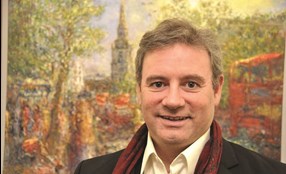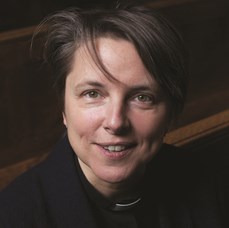An Open Letter to the Church of England, in the light of plans for a separate structure made by those who reject the validity of same-sex relationships.
WE ARE two incumbents in central London. Some neighbouring parishes have announced their intention to form a separate structure, perhaps a new province, within the Church of England.
This has been prompted by the modest steps that the House of Bishops has taken to enable clergy to affirm civil partnerships liturgically, as part of the Living in Love and Faith process. Headline aspects of the announcement include withholding parish contributions to dioceses and the commissioning of lay people to lead churches, in many instances following the principle of male headship.
But, at its heart, this announcement draws its intention from an objection to the validity of same-sex relationships, and a retrospective objection to the Church’s ordination of female priests and bishops. These plans not only have implications for the contemporary Anglican Communion, but also present a formidable challenge to the faithful proclamation of the gospel of Jesus Christ afresh in each generation.
The protest has gone beyond verbal or synodical. It has now become confrontational and subversive, and is explicitly threatening the integrity of the Church of England, while its proponents maintain that such a threat is, on the contrary, coming from those imposing a revised understanding of valid human partnership (while claiming not to).
In the clamour, we perceive a number of assertions are going largely unquestioned. These concern the Bible; scripture and same-sex relationships; marriage; the church; the Anglican Communion; and mission. Phrases such as “orthodox Christianity”, “the Bible is clear on the matter,” “colonial mindset”, and “liberal churches shrink” are becoming commonplace, and are being asserted with a sweeping confidence that we believe to be not well founded.
We are making this intervention in the recognition that our position is now characterised as one that is not biblical or faithful. We also want to respond to written statements setting out the categories of concern. This open letter offers a different account of these matters, and articulates a perspective in which the leadership of women and the increasing recognition of same-sex relationships are not an egregious departure from the faith, but are, instead, good and right and true.
The Bible
THE Bible tells the story of God’s desire to be with the children of Abraham, and, in Jesus, the opening out of that longing to be with all creation, now and for ever. It includes many accounts of failure by God’s people to recognise the gift that the Holy Spirit is bringing in the humanity of those once excluded. It is a story of humanity’s ever widening understanding of God’s purpose to be our companion now and forever.
The Gospels repeatedly demonstrate Christ’s embrace of those shunned and shamed by people who believed that they were being faithful to God’s purposes. The restoration of God’s people from exile and the ministry of Jesus represent the drawing together of the diverse elements of God’s good creation, in anticipation of the everlasting life to which God calls us all. Jesus’s faithfulness in the face of agonising death demonstrates that nothing will divert God from this purpose to be with us, while Jesus’s resurrection shows that this purpose cannot be thwarted.
Scripture and same-sex relationships
THE Bible portrays people relating to God and one another in a variety of ways over many centuries. It is not a static rulebook, but a dynamic account of God’s constant invitation to covenant, community, and communion — and of assorted faithful, halting, and fragile human responses to that call. It does contain explicit instruction for ordering personal, communal, social, and ecological life. The validity of some of this is temporary, some more lasting, and some permanent.
For a long time, it has been assumed that the prohibitions on same-sex sexual activity were permanent. But serious historians and faithful exegetes have come to question this, pointing out that, in the ancient world, such activity was invariably exploitative and oppressive, while lifelong, exclusive, and loving same-sex partnerships were unknown.
 The Revd Dr Sam Wells
The Revd Dr Sam Wells
What scripture condemns is something that no one in the Church today would advocate. Lifelong and loving same-sex partnership is something unknown to the Bible. Thus, an ethic of same-sex relationship should be drawn not from specific scriptural prohibition, but from the way in which humans are called in their relationships to embody the trust, care, faithfulness, and tenderness of God.
The widely cited term porneia indicates transgressive sexual behaviour in general. The point at issue today is not whether the term was intended to prohibit same-sex sexual activity in the first century, which it did, but whether today’s covenanted same-sex relationships are, in that ancient sense, transgressive. It is evident to us that they are not. While celibacy remains a calling for some, vocation is an invitation from the Holy Spirit to an individual. Thus, it is a category mistake to misuse the notion of vocation to suggest that it can be laid collectively upon a whole section of society.
Marriage
THE Old Testament offers various portrayals of human partnership, including kings with multiple wives and concubines. This was an era in which children were a necessity, and large extended families were a blessing.
The New Testament also has diverse notions of faithful partnership; but the central emphasis is on singleness in the face of God’s impending in-breaking realm. While there are analogies relating marriage to Christ and the Church, there is also Jesus’s insistence that following the way of the cross disrupts family life and upturns all relationships.
The notion that monogamous heterosexual marriage is foundational as a consistent scriptural portrayal of God’s relationship with humankind, and accordingly constitutes the definitive form of relationships of humans with one another, is, therefore, not plausible. Indeed, since the Early Church, human relationships have continued to be shaped by their surrounding culture, in dialogue with scriptural traditions. For example, for many centuries, monasticism was regarded as the true and highest calling, while the nuclear family is a creation of the industrial era from the 19th century. What haven’t changed are the three central priorities: the nurture of children, the godsend of companionship, and the gift of sexual tenderness, each to be enjoyed in conditions of trust.
Church
THE Church is three things: the body of Christ, which is called to inhabit the space that Jesus occupies as fully human, fully divine, bringing humanity to God and God to humanity; a collection of flawed individuals seeking to walk together in Christ’s steps; and the panoply of governance, procedure, and administration which enables disparate congregations to interact and enhance one another’s discipleship, ministry, and mission. The third exists to enhance the second in the light of the first: it must never be mistaken for the most important one.
The Church was founded not on the Beloved Disciple, faithful to the cross, but on Peter, feckless and fitful; the resurrection was beheld and proclaimed first by Mary Magdalene, who, as a sole female witness, would have been deemed completely unreliable at the time.
In each generation, the Church strives to live today the future that Jesus promises, portrays, and embodies. The Church never has been and never will be a uniform movement of identical interpretations, manifestations, or temperaments. It has grown over centuries in diverse cultures enriched by distinct and varied contributions. Many apparently secular impulses, e.g., for liberation or justice, are, in fact, rooted in Christian convictions. The Church’s unity is not a public-relations tool or missionary tactic: it is a reverent fear of dismembering Christ’s body and a commitment to honour Christ’s fervent Last Supper prayer.
Global Communion
THE unity and character of the Anglican Communion are crystallised in the term “bonds of affection”. The Communion is a profound form of mutual enrichment and solidarity. But it is not, and never has been, an attempt at global uniformity.
Those advocating greater acceptance of same-sex relationships are not talking about imposing values inappropriately, but, instead, about articulating scriptural readings within a level of respect that enables the fostering of unity without homogeneity. The principle of disagreeing peacefully and yet robustly about the leadership of women or the acceptance of same-sex relationships can be just such an expression of that unity without uniformity.
The Church of England would be colonial today if it were insisting that its decisions were extended to the whole Communion — which it is not; and, in any case, it cannot. Forging respect and reinforcing trust must mean appreciating one another’s diverse mission contexts, while confidently expressing contrary views when necessary.
Mission
THE world has always been complex, changing, and challenging; that complexity and rate of change has increased significantly in an era of technology and globalisation. It is understandable that many people seek security and identity in apparently unchanging convictions and explicitly confident authority. Religion, in general, and Christianity, in particular, can often be regarded in that light.
But to say, “Many Christians and most young Christians attend churches whose leaders protest against the gradual recognition of the validity of same-sex relationships, and therefore such recognition should be opposed,” is not a serious argument.
 The Revd Lucy Winkett
The Revd Lucy Winkett
The mission of the Church of England to the nation is for every person in this country to experience the Church as a blessing and to be moved to understand God’s embrace of love now and for ever, and to participate actively in a community of faith which strives to embody and commend that love.
To say that the Church’s discernment in relation to same-sex relationships is confusing those who need clear guidance is to patronise young people, who are already aware of the complexity of relationships and need compassion, understanding, and companionship, not blanket prohibitions. It is no exaggeration to say that the Church’s intransigence on this issue has done more than anything else to alienate a generation of young people who find the Church’s current stance not only incomprehensible and illogical, but intolerable and cruel.
Summary
WE HAVE more than 60 years of pastoral ministry experience between us, in a variety of contexts. We are, therefore, well aware that it is not always easy to find a way forward on a contentious question that evokes passionate conviction.
But two guides may be worth considering in directing the Church’s attention and discernment. One is: “Does the Church look like Jesus — the Jesus whose ministry was constantly criticised for its embrace of those close to God but excluded by God’s people?” Another is: “Are we embodying and presenting to the world the fruits of the Spirit: love, joy, peace, patience, kindness, goodness, faithfulness, gentleness and self-control?”
The perspective offered in this letter on the Bible, scripture, and same-sex relationships, marriage, the Church, the Anglican Communion, and mission points to an appropriate and faithful response to those two questions.
From challenge to assertion
SO MUCH for challenging the assertions so frequently made by opponents of the recognition of same-sex relationships. The positive argument for affirming such relationships is more simply put.
This is not some notion of imposing a secular agenda focused on rights, or justice, or compassion, nor the following of transient fashion or passing trends. This is not something that the Church is doing “for women” or “for gay people”. This is fundamentally about the way in which the Holy Spirit renews the Church itself.
God gives the Church everything it needs. But we Christians — out of fear of being overwhelmed, anxiety about change, or reluctance to seem in the wrong — invariably struggle to receive the abundant gifts that God is giving us.
Here are human beings who have courageously modelled fidelity, trust, and love, and have remained breathtakingly open to being part of the Church, despite the Church’s relentless determination to marginalise, degrade, and isolate them. These are witnesses to exactly the kind of resilience, humility, grace, and faithfulness that the Church profoundly needs as it faces the challenges of cultural obscurity in a society in which vast numbers of people have simply walked away.
Meanwhile, the Church exists in a fragile world that struggles to cope with difference, is increasingly brittle in its expression of polarised views, and is urgently in need of models of how to abide in respectful commonality while disagreeing significantly. Here, surely, is a gift and a calling for the Church today, if only we could see it.
Faithfully and sincerely,
(The Revd Dr) SAM WELLS, Vicar, St Martin-in-the-Fields, London
(The Revd) LUCY WINKETT, Rector, St James’s Piccadilly, London
















